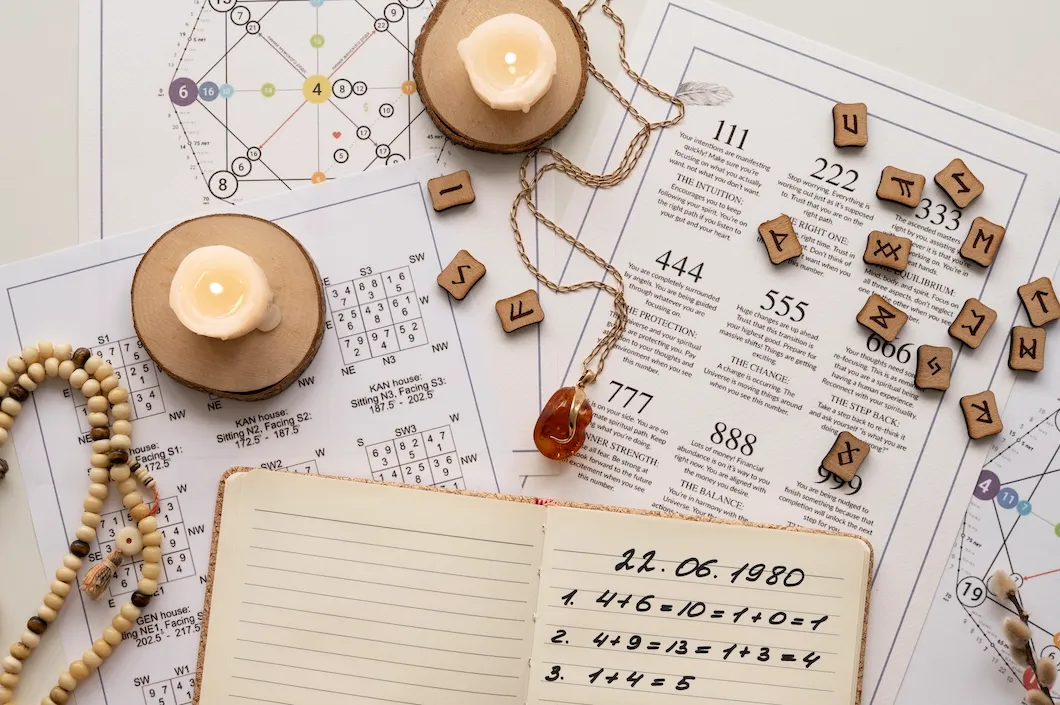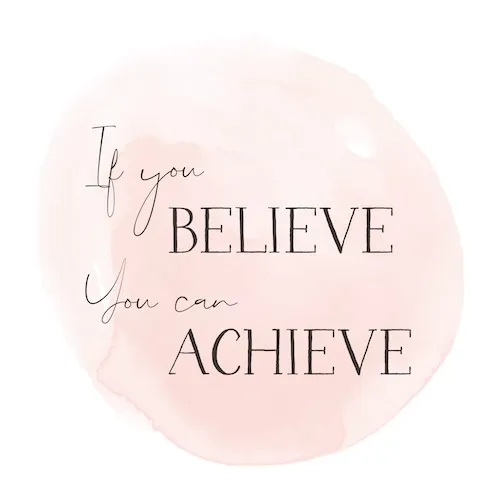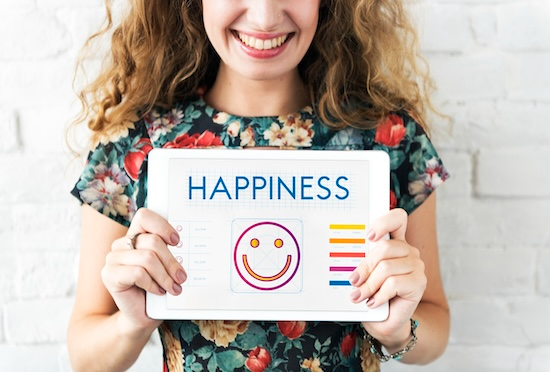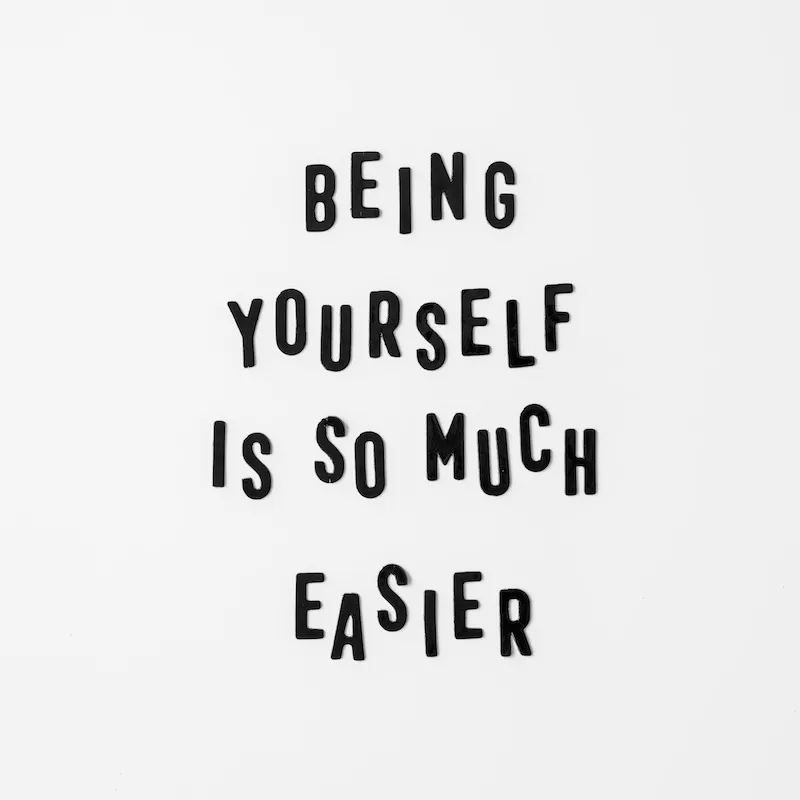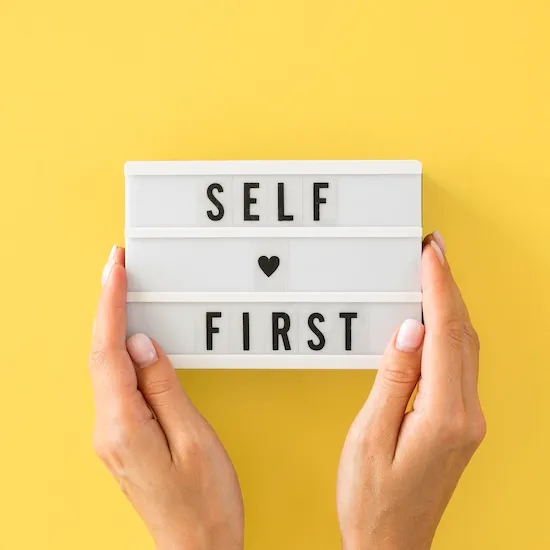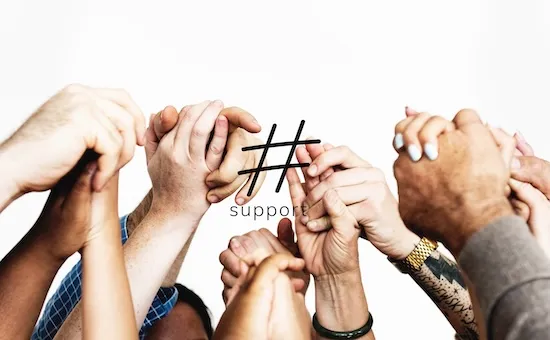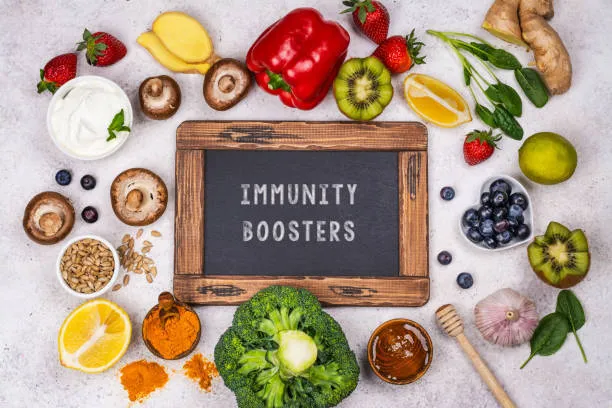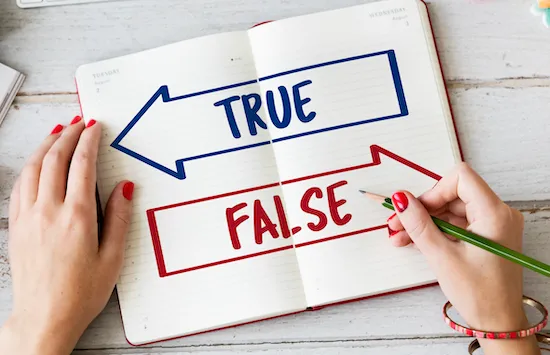What Is The Law Of Attraction?
Discover why the Law of Attraction has become a popular concept in recent years and how it can potentially change your life for the better.
Have you ever felt like you’re stuck in a rut, unable to manifest the life you truly desire?
Despite your best efforts, it seems like the universe is conspiring against you, and your dreams remain elusive. You’re not alone in this struggle. In a world where external distractions and societal pressures constantly bombard us, it’s easy to lose sight of the profound impact our inner world has on shaping our reality.
But what if we told you that the key to unlocking your highest potential and manifesting your deepest desires lies within you?
Enter the Law of Attraction, a powerful “like attracts like” framework that implements some of the most profound principles of quantum physics. It suggests that our thoughts, beliefs, and emotions have a direct influence on the events and circumstances we experience in our lives.
But what is the Law of Attraction exactly, and how does it work? Can it really bend the laws of the universe to our will?
At AlignUs, we understand the challenges that can arise when navigating the path of manifestation. Sometimes, it can feel like you’re fighting against a current, desperately clinging to your goals while circumstances and doubt pull you in the opposite direction. That’s why we are building one of the best positive social media platform options out there to help guide seekers like you on your journey towards alignment and abundance.
Whether you’re seeking personal growth, professional success, or a deeper sense of purpose, the Law of Attraction holds the key to unlocking your true potential. Join us on this incredible journey, and let AlignUs be your trusted guide as you manifest the life you’ve always dreamed of.
What Is The Law of Attraction?
At its core, the Law of Attraction is a universal principle that suggests our thoughts and feelings have the power to shape our reality. It’s based on the idea that like attracts like – positive thoughts and beliefs bring about the attraction of positive experiences and negative thoughts and beliefs attract negative circumstances.
However, it’s important to understand what the Law of Attraction is not. It’s not a magic spell that can instantly manifest your deepest desires without effort. Nor is it a quick fix for all of life’s challenges. Instead, it’s a powerful tool that requires consistent practice, mindset shifts, and a willingness to take inspired action.
The concept of the Law of Attraction can be traced back to ancient philosophies and spiritual teachings, but it gained mainstream popularity in the early 2000s with the release of the book “The Secret” by Rhonda Byrne. This book introduced the Law of Attraction to a wider audience, sparking a renewed interest in the power of positive thinking and manifestation.
Throughout history, various cultures and belief systems have embraced similar principles, emphasizing the interconnectedness of our thoughts, beliefs, and experiences. From the ancient Hermetic principles of “as above, so below” to the Buddhist teachings on the nature of reality, the idea that our internal state shapes our external circumstances has been a recurring theme.
It’s important to note that the Law of Attraction is not a religious or spiritual doctrine but rather a universal principle that individuals of any background or belief system can apply. It’s rooted in the understanding that our thoughts and emotions emit a vibrational frequency to draw in connecting experiences and circumstances into our lives.
At AlignUs, our positive social media platform aims to demystify the Law of Attraction and provide practical guidance on how to harness its power effectively. We understand that while the concept may seem abstract, its application can have tangible and transformative effects on various aspects of our lives, from relationships and career to personal growth and well-being.
Mindset and Vibration: The Energetic Blueprint of Manifestation
At the heart of the Law of Attraction lies the understanding that our thoughts and feelings are not merely fleeting mental experiences but powerful energetic frequencies that ripple outward, shaping our reality in pretty profound ways.
Our minds are like powerful transmitters, continuously broadcasting vibrations into the universe. These vibrations, influenced by our dominant thoughts, beliefs, and emotional states, act as blueprints or energetic magnets, attracting experiences, people, and circumstances that resonate with their frequency.
When we cultivate a positive mindset and maintain uplifting emotions like joy, gratitude, and love, we emit high-vibrational frequencies that align with abundance, happiness, and fulfillment. Like a tuning fork, these elevated vibrations harmonize with the universal energy field, attracting more of our desires into our lives.
But here’s the kicker: when we harbor negative thoughts, doubts, and low-vibrational emotions like fear, anger, or resentment, we inadvertently attract experiences that match this lower frequency. It’s akin to setting the dial on a radio – if tuned into a negative station, we’ll receive static and disharmony rather than the clear, harmonious signal we seek.
Within the AlignUs healthy lifestyle community, we emphasize the importance of mindset and vibrational alignment. Through our personal growth podcast, guided meditations, and mindfulness practices, we provide tools and techniques to help members cultivate a positive mindset and raise their energetic vibration.
By learning to consciously choose our thoughts and manage our emotional states, we can harness the power of the Law of Attraction and create a vibrational match that attracts the experiences, relationships, and opportunities we truly desire.
Remember, our thoughts and emotions are not just transient mental states – they are powerful energetic forces that shape our reality. By aligning our mindset and vibration with our aspirations, we unlock the universe’s infinite potential to manifest our dreams into tangible form.
Visualization Techniques: Blueprinting Your Desired Reality
One of the most powerful tools in the Law of Attraction arsenal is visualization. By harnessing the power of mental imagery, we can create a vivid blueprint of our goals and desired outcomes, setting the stage for manifestation.
Mental Imagery: The Mind’s Eye of Manifestation
Visualization is the act of creating detailed mental pictures of what we want to experience in our lives. It’s like giving our subconscious mind a clear roadmap, aligning our thoughts, emotions, and actions toward realizing our aspirations.
When we engage in mental imagery, we stimulate the same neural pathways in our brains as if we were physically experiencing the event. This process plants the seeds of manifestation in our subconscious, programming our minds to recognize opportunities and take inspired action toward our goals.
Within the AlignUs healthy lifestyle community, we guide members through visualization exercises and meditations, helping them cultivate the skill of creating vivid mental images. By consistently visualizing their desired outcomes, members can reinforce their belief in their ability to manifest their dreams while aligning their vibration with the frequency of their goals.
Vision Boards: A Tangible Manifestation Tool
Another powerful visualization technique is the creation of vision boards – a collage of images, affirmations, and representations of our desires. Vision boards serve as a constant visual reminder, keeping us focused and motivated on the path to manifestation.
Assembling a vision board is a powerful exercise in itself, as it requires us to clarify our goals and consciously choose the energetic frequencies we wish to align with. By surrounding ourselves with images and symbols that resonate with our desired reality, we reinforce our mental programming and amplify the vibrational match we create.
Within the AlignUs positive social media platform, we encourage members to share their vision boards, fostering a supportive community of like-minded individuals on the path of manifestation. Seeing others’ vision boards can inspire and motivate us while also providing a space for accountability and encouragement.
Positive Affirmations: Can We Reprogram the Subconscious Mind?
Affirmations are more than just positive self-talk – they are powerful incantations that can reshape the very fabric of our reality. The words we speak and the thoughts we think have a huge impact on our subconscious mind, which acts as the gatekeeper to our beliefs, habits, and, ultimately, our manifestations.
What Are Affirmations?
Affirmations work by reprogramming our subconscious minds, overriding limiting beliefs and negative thought patterns with empowering, positive statements that align with our desires. When we consistently repeat affirmations, we reinforce these new beliefs, training our minds to focus on what we want to attract rather than what we want to avoid.
At AlignUs, our mental health platform provides a wealth of affirmation resources, guiding members in crafting personalized affirmations that resonate with their goals and aspirations. We understand the power of words and their ability to shape our vibrational frequency.
Daily Practice
Consistency is key when it comes to the effectiveness of affirmations. Much like building muscle, reprogramming our subconscious minds requires dedication and repetition. By making affirmations a daily practice, we reinforce these positive beliefs, gradually embedding them into our consciousness until they become second nature.
The AlignUs healthy lifestyle community encourages members to incorporate affirmation practice into their daily routines, whether it’s repeating affirmations during morning meditations, writing them in journals, or recording themselves and listening to their own voices.
Through consistent practice, these affirmations become ingrained in our belief systems, amplifying the power of the Law of Attraction and attracting more of what we affirm into our lives.
Emotional Alignment: The Vibrational Match for Manifestation
Feelings and Emotions
Our emotions are the language of the universe, and aligning them with our desires is crucial for effective manifestation. When we cultivate emotions that resonate with our goals, we create a powerful vibrational match that attracts corresponding experiences and circumstances.
Just as positive affirmations reprogram our subconscious minds, positive emotions realign our energetic frequencies, making us a magnet for what we wish to attract. By consciously fostering emotions of joy, gratitude, love, and abundance, we raise our vibration and attract more of those positive experiences into our lives.
Gratitude Practice
One of the most powerful tools for fostering positive emotions and aligning with the frequency of abundance is a regular gratitude practice. By expressing appreciation for the blessings and abundance already present in our lives, we generate feelings of joy, contentment, and appreciation, which, in turn, attract more of what we are grateful for.
The AlignUs community encourages members to share their gratitude experiences, creating a ripple effect of positivity and reinforcing the belief that abundance is all around us, waiting to be acknowledged and amplified through our gratitude.
Remember, our emotions are not just fleeting feelings – they are powerful vibrational frequencies that shape our reality. By aligning our emotions with our desires and cultivating an attitude of gratitude, we create a powerful, energetic match that attracts more of what we seek to manifest.
Action and Belief: Bringing Manifestation to Life
While the power of thoughts and emotions is undeniable, the Law of Attraction is not a passive process. Taking inspired action towards our goals is essential for manifestation to occur. When we align our actions with our desires, we create a powerful synergy that propels us towards our aspirations.
The Power of Inspired Action
Inspired action involves following the intuitive nudges and opportunities that present themselves, taking steps that resonate with our goals and align with our vibrational frequency. It might be applying for that dream job, initiating a conversation with someone who could become a valuable connection, or simply decluttering your space to make room for new experiences.
Within the AlignUs community, we encourage members to share their inspired action stories, celebrating each step taken towards manifesting their dreams. By witnessing others taking action, we reinforce the belief that manifestation is an active process, requiring us to meet the universe halfway.
Faith and Belief
Belief in the process of the Law of Attraction is fundamental to its effectiveness. When we approach manifestation with doubt or skepticism, we create energetic resistance that can hinder our progress.
However, by maintaining faith in our ability to manifest our desires and trusting in the universe’s abundance, we eliminate obstacles and allow the flow of manifestation to occur naturally.
Remember, the Law of Attraction is not a quick fix or a magic wand – it’s a journey of personal growth, self-awareness, and alignment. By taking inspired action and maintaining unwavering belief, we become active co-creators in the manifestation process, working in harmony with the universe to bring our desires into tangible reality.
Are You Prepared To Realize Your Manifestation Potential?
The Law of Attraction is a powerful principle that offers a pathway to manifesting a life of abundance, joy, and fulfillment. By aligning our thoughts, emotions, and actions with our desires, we create a vibrational match that attracts corresponding experiences and circumstances into our lives.
At AlignUs, we understand that the manifestation journey can be both exhilarating and challenging. That’s why we’ve created a comprehensive platform to guide you every step of the way. Through our engaging content, supportive community, and practical tools, we empower you to effectively harness the power of the Law of Attraction.
Join our vibrant, healthy lifestyle community and immerse yourself in a world of positivity and personal growth. Participate in our guided meditations, affirmation practices, and visualization exercises designed to align your mindset and emotions with your desired outcomes.
Explore our personal growth podcast and blog, where our experts share valuable insights, strategies, and real-life stories of manifestation success. Connect with like-minded individuals who will inspire and encourage you on your journey.
Remember, the key to unlocking your manifestation potential lies within you. By embracing the principles of the Law of Attraction and taking inspired action, you can create the life you’ve always dreamed of.

